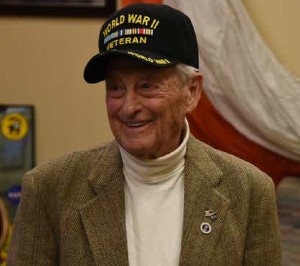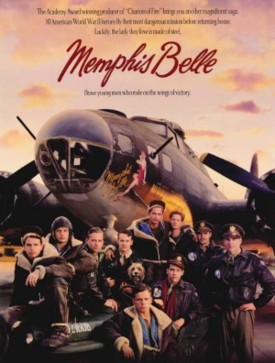Bomber Pilot Shares Memories of Danger and Deliverance
By Neil Earle
 Jerome Neal
Jerome Neal“Flying in the Eight Air Force was like holding a ticket to a funeral – your own,” remembered 99-year-old Jerome Neal of Nashville, a World War II bomber pilot.
Neal related his experiences to the December 6, 2020 Memphis Commercial Appeal which has a resonance in Memphis because of the famous career of the Memphis Belle, a B bomber that flew missions and returned their crews safely.
Neal received the Distinguished Flying Cross for his service over Europe in the air war over Europe from 1942-1945, a grueling experience for flight crews where B-24 missions could be 10-12 hours long and temperatures could reach -70 degrees by the time they reached 30,000 feet.
 Even 1949 Hollywood couldn’t paper over the horrors bomber fliers faced in the Second World War.
Even 1949 Hollywood couldn’t paper over the horrors bomber fliers faced in the Second World War.This added to the peril of enemy fighters and ground fire over the targets which could be intense. “Your oxygen line could freeze and then you’d suffocate,” Neal says. “Men suffered from frostbite and had to have a hand or foot amputated.”
Most 1943 bomber crews didn’t survive five missions. Neal completed more than 35. Coming back from a D-Day bombing mission his B-24 ran out of fuel. A massive engine roar and then – silence. “I got my crew to parachute out but the other pilot and the navigator stayed with me.” They released their unused bombs and expected to crash in the water when a strip of rock appeared in the middle of the English Channel. “I hit it and skidded across, losing engines and the body of the plane – everything but the cockpit and one wing.”
The three climbed out on the wing and awaited rescue. “That was God,” he states. “How else can you explain it?”
 MEMPHIS BELLE: Symbol of Memphis effort in World War Two, the sturdy B-17 has been the subject of 2 films after safely securing its crew on 25 missions before being recalled to the US as a patriotic symbol.
MEMPHIS BELLE: Symbol of Memphis effort in World War Two, the sturdy B-17 has been the subject of 2 films after safely securing its crew on 25 missions before being recalled to the US as a patriotic symbol.“That was God!”
Neal didn’t consider himself a spiritual person but these experiences made him think. Even in training in Idaho he had an experience where bad weather prevented him from landing and a beam of light became his guide as he circled down and ever down to the runway. He was forced to reflect: “A light thousands and thousands of feet above the cloud cover that guided me safely so I didn’t hit a mountain. That was God.”
Losing so many friends shook him up considerably. Some died in his arms. After the war he refused to take a job with TWA. He finally learned to process his pain. “Those experiences led me to accept Jesus as my Savior,” he told Reverend R.A. Matthews. “My life has had value. I don’t think that would have happened without the war.”
Thank you. Your testimony lives on to inspire and motivate others to this day.